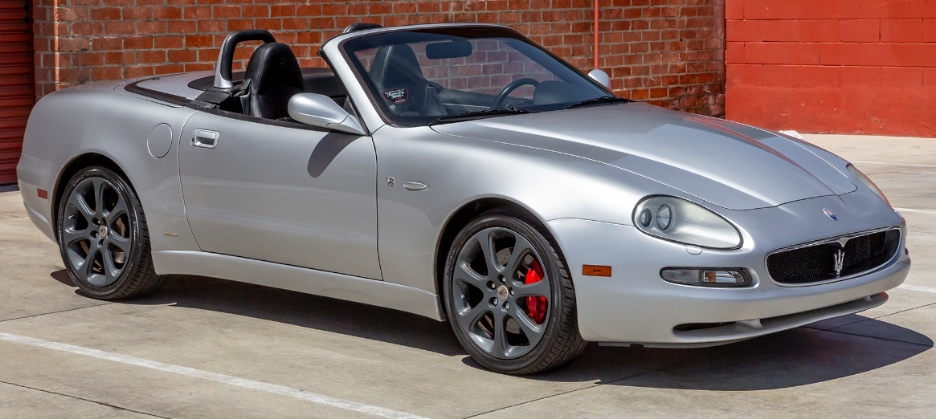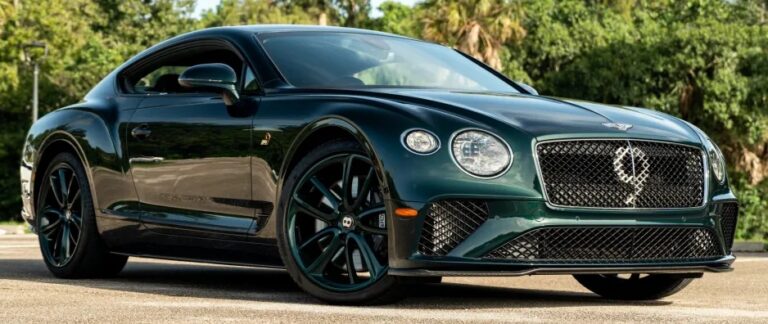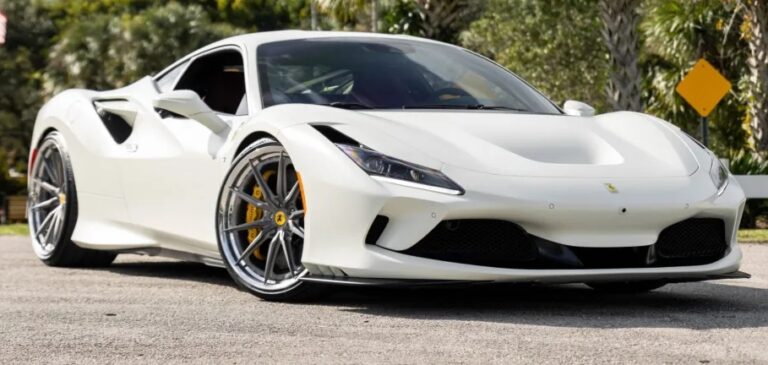The Evolution of the Maserati Spyder (Maserati 3200 GT Convertible)
The Maserati Spyder, also known as the Maserati 3200 GT Convertible in its early years, stands as a significant model in Maserati’s rich automotive history. Produced from 2001 through 2007, the Spyder epitomized Maserati’s efforts to blend Italian luxury, sports car performance, and open-air driving pleasure. Over its production span, the Spyder underwent several updates, model variations, and technological enhancements, reflecting both the brand’s evolving design philosophy and advancements in automotive engineering.
This article provides an in-depth, factual overview of the Maserati Spyder’s production years, models, and trim levels, charting its development from inception to its final iteration.
Origins and Introduction (2001–2002)
Launch and Background
The Maserati Spyder was introduced in 2001 as a replacement for the aging Maserati Ghibli Spyder, which had been produced in the late 1990s. It was based on the architecture of the Maserati 3200 GT coupe, sharing much of its mechanical underpinnings but offering the visceral experience of open-air motoring.
Design and Development
Designed by the Italian firm Pininfarina, the Spyder featured sleek, aerodynamic lines, a front engine layout, and a retractable soft-top roof. Its design aimed to capture the spirit of classic Italian convertibles while incorporating modern styling cues.
Powertrain and Performance
The initial model, launched as the Maserati 3200 GT Spyder, was powered by the same twin-turbocharged 3.2-liter V8 engine found in the coupe. This engine produced approximately 370 horsepower and 425 Nm of torque, enabling a 0-60 mph acceleration in around 5.5 seconds. The engine was paired with a six-speed automated manual transmission, known as the “Cambiocorsa,” which was a Ferrari-derived system offering rapid shifts.
Models and Trim Levels
At inception, the 2001–2002 Spyder was primarily available as a single trim model, emphasizing luxury and performance without significant subdivisions. However, there were some optional packages, such as:
- Standard Trim: Focused on luxury appointments, high-quality leather upholstery, and advanced audio systems.
- Optional Features: Including premium sound systems, upgraded wheels, and specific interior packages.
The 2003 Model Year: Introduction of the 3200 GT and the Maserati Spyder
Model Refinement
For 2003, Maserati continued to refine the Spyder, emphasizing improved technology, comfort, and performance features. This year marked the beginning of more distinct model identification, though the core model remained largely consistent.
Performance and Mechanical Updates
While the engine remained the twin-turbo 3.2-liter V8, Maserati made incremental improvements in engine calibration and chassis tuning, resulting in a slightly more refined driving experience.
Trim Levels and Special Editions
- Standard Model: The primary offering remained the convertible version of the 3200 GT with no major trim distinctions.
- Maserati Spyder Gold Edition: A limited edition produced around 2003, featuring unique gold-colored badging, special paint options, and interior enhancements.
Features
Standard features included leather upholstery, alloy wheels, climate control, and a premium audio system. Optional packages included:
- Luxury Package: Upgraded interior trim and advanced audio.
- Sport Package: Enhanced suspension tuning and larger wheels.
The Introduction of the Maserati GranSport Spyder (2004–2006)
Transition to the GranSport Name
In 2004, Maserati introduced the GranSport nameplate for its coupe, and the Spyder was also rebranded as the Maserati GranSport Spyder. This marked a significant step in the model’s evolution, as the GranSport version brought notable performance and styling enhancements.
Design and Styling
The GranSport Spyder featured more aggressive styling cues, including wider wheel arches, revised front and rear bumpers, and a more modern, aerodynamic profile. Pininfarina continued as the designer, but the overall aesthetic was sharper and more contemporary.
Powertrain and Technical Enhancements
- Engine: The twin-turbocharged 3.6-liter V8 replaced the earlier 3.2-liter engine, producing approximately 396 horsepower and 360 lb-ft of torque.
- Transmission: The six-speed Cambiocorsa automated manual remained, offering faster shift times and improved responsiveness.
- Chassis and Suspension: Upgrades included a more rigid chassis, improved suspension geometry, and enhanced handling characteristics.
Trim Levels and Variants
During these years, Maserati offered the GranSport Spyder primarily as a single, well-equipped model with optional packages:
- Base GranSport Spyder: Included performance upgrades, sportier styling, and luxury features.
- Optional Packages:
- Premium Pack: Leather interior upgrades, premium audio, and navigation.
- Handling Pack: Performance-oriented suspension tuning and larger wheels.
Special Editions and Limited Runs
- Maserati GranSport Spyder “Nero Corse” (2005): A limited edition with unique black paint, special trim, and bespoke interior features.
- Maserati GranSport Spyder “Primatist” (2006): Recognized for exclusive paint and interior options, commemorating Maserati’s racing heritage.
Features and Technology
Standard features evolved to include:
- Adaptive suspension (on some models)
- Bose premium audio
- Navigation systems
- Leather upholstery with contrasting stitching
- Power-operated retractable soft top
The Final Years and Discontinuation (2007)
Model Year 2007: The Last of the Maserati Spyder
The 2007 model year marked the end of the Spyder’s production. By this time, Maserati had shifted focus to its newer models, such as the GranTurismo and Quattroporte, and the Spyder was phased out.
Final Updates
- The 2007 Spyder retained the 4.2-liter V8 engine introduced in earlier models, producing around 400 horsepower.
- The vehicle featured minor interior and exterior refinements, including new wheel designs and updated trim options.
Discontinuation and Legacy
Production of the Maserati Spyder concluded in 2007 after approximately 6,000 units were built worldwide. Its legacy endures as a stylish, performance-oriented convertible that bridged Maserati’s traditional craftsmanship with modern automotive technology.
.
You’ve got that cool car, but is it resting in its own cool place?
It’s visually pleasing for the surrounding areas outside of your home to look as awesome as what’s stored inside your garage! If you desire a truly inspirational environment, you should check into these plans!

.
Summary of Models and Trim Levels
| Year | Model/Name | Engine | Power (hp) | Notable Features |
|---|---|---|---|---|
| 2001–2002 | Maserati 3200 GT Spyder | Twin-turbo 3.2L V8 | ~370 | Initial soft-top, luxury appointments |
| 2003 | Maserati Spyder (no specific trim) | Twin-turbo 3.2L V8 | ~370 | Minor refinements, optional special editions |
| 2004–2006 | Maserati GranSport Spyder | Twin-turbo 3.6L V8 | ~396 | Aggressive styling, performance upgrades, optional packages |
| 2005–2006 | Limited editions (e.g., Nero Corse, Primatist) | Same as above | Varies | Special paint, interior options, collector editions |
| 2007 | Final model year with 4.2L V8 | Naturally aspirated 4.2L V8 | ~400 | Last facelift, refined features |
Conclusion
The Maserati Spyder’s evolution from 2001 to 2007 reflects the brand’s commitment to blending luxury, performance, and Italian design. Starting as a stylish convertible based on the 3200 GT platform, it transitioned into the more aggressive and performance-focused GranSport Spyder, embracing modern engineering and styling cues. Throughout its production, the Spyder offered various editions and packages, appealing to enthusiasts seeking both daily luxury and spirited driving.
Today, the Maserati Spyder remains a sought-after classic, appreciated for its distinctive design, spirited V8 engine, and role in Maserati’s renaissance during the early 2000s. Its legacy continues as a symbol of Maserati’s craftsmanship and performance-oriented philosophy during a pivotal era in its history.







